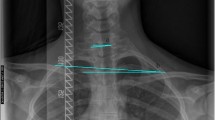Abstract
Idiopathic scoliosis is a progressive lateral curvature of the spine usually appearing during early adolescence. It may result in severe deformity with complications that profoundly affect the socio-economic future of the patient. The Milwaukee brace, frequently used in nonsurgical ambulatory treatment of scoliosis, seems to correct the disease by exerting traction and local pressure on the spine. Its lower end girdles the pelvis and the upper end bears on the occiput and mandible. In order to define precisely how the Milwaukee brace acts, and establish rational criteria for its use, a program has been undertaken to measure the forces exerted by the brace during treatment.
In this paper, measurement by two three-component dynamometers of the forces the brace exerts on the occiput and mandible is described. The design of compact, sensitive measuring units, their incorporation into the brace and the associated instrumentation are discussed. A brief description of results obtained in an initial study of four patients is given.
The dynamometers developed are suitable for use in force measurement in a wide range of orthotic and prosthetic appliances.
Similar content being viewed by others
References
Nachemson, A., “Prognosis in Untreated Cases of Idiopathic Socliosis”, Scol. Res. Soc. Mtg., Houston (1968).
Shands, A. R., Jr. andEisberg, H. B., “Incidence of Scoliosis in the State of Delaware; Study of 50,000 Minifilms of the Chest Made During Survey for Tuberculosis”,Jnl. Bone Joint Surg.,37A,1243 (1955).
Bruszewski, J. andKamza, Z., “Incidence of Scoliosis Based on an Analysis of Serial Radiography”,Chir. Narzad. Ruchu Ortoped. Pol.,22,115 (1957).
Blount, W. P., Schmidt, A. C., Keever, E. D., andLeonard, E. T., “The Milwaukee Brace in the Operative Treatment of Scoliosis”,Jnl. Bone Joint Surg.,40A,511 (1958).
Logan, W. R., “The Effect of the Milwaukee Brace on the Developing Dentition”, Trans. Brit. Soc. Study Orthodontics, London, 1–8 (1962).
Cochran, J. and Waugh, T., “External Forces in Treatment of Idiopathic Scoliosis”, Scol. Res. Soc. Mtg., Houston (1968).
Waugh, T., “Intravital Measurements During Instrumental Correction of Idiopathic Scoliosis”,Acta Orthopaed. Scand. Suppl. 93,Munksgaard,Copenhagen (1966).
Cook, N. H., Loewen, E. G., and Shaw, M. C., “Machine Tool Dynamometers—a Current Appraisal”, Am. Machinist 125–129 (May 10, 1954).
Loewen, E. G. andCook, N. H., “Metal Cutting Measurements and Their Interpretation”,SESA Proc. XIII (1),57–62 (1955).
Galante, J. O. and Schultz, A. B., “Forces Acting on the Milwaukee Brace During Treatment of Idiopathic Scoliosis”, manuscript submitted for publication.
Author information
Authors and Affiliations
Rights and permissions
About this article
Cite this article
Schultz, A.B., Galante, J.O. Measurement of forces exerted in the correction of idiopathic scoliosis using three-component dynamometers. Experimental Mechanics 9, 419–423 (1969). https://doi.org/10.1007/BF02327008
Issue Date:
DOI: https://doi.org/10.1007/BF02327008




